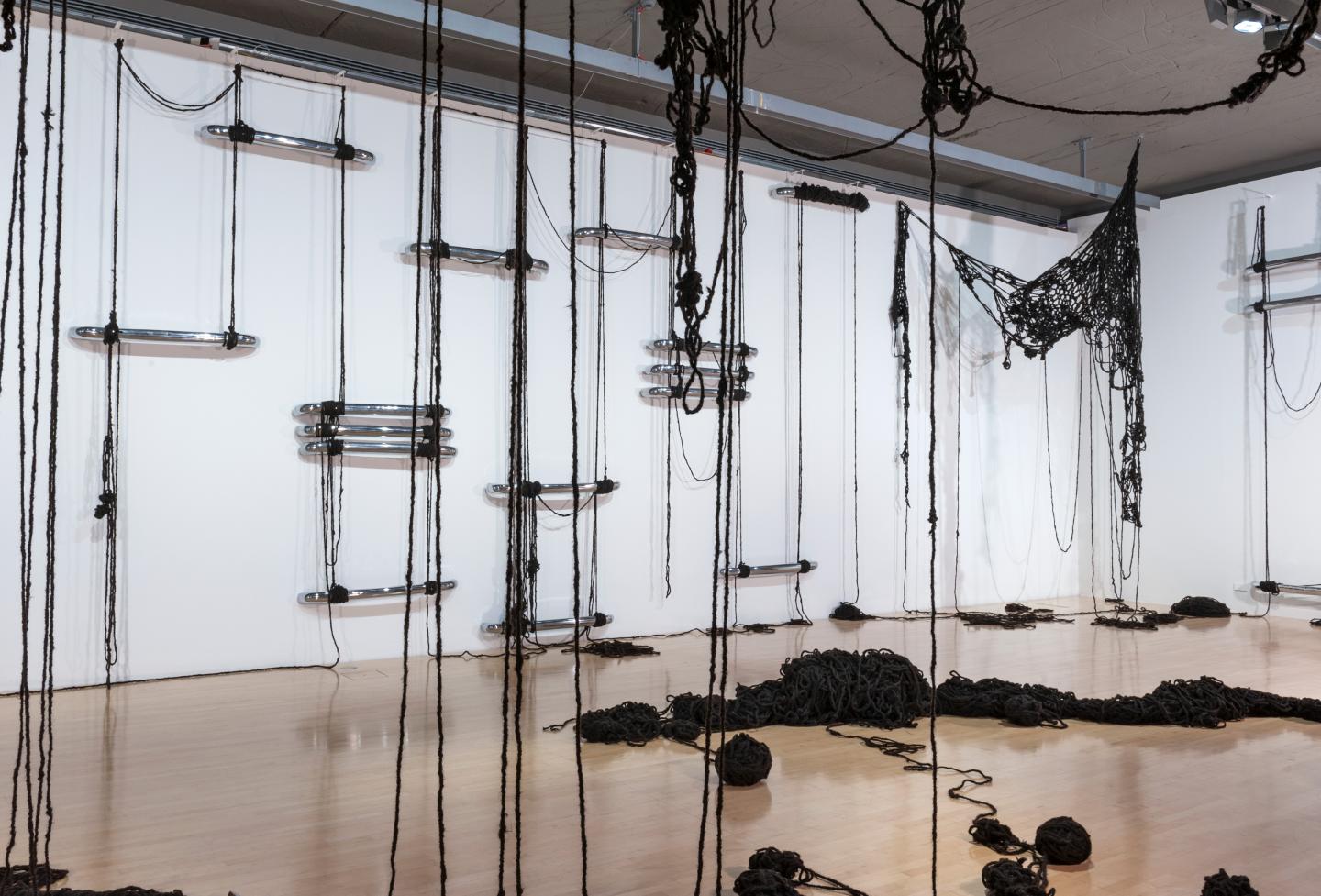Sheela Gowda’s Material Politics
At Lenbachhaus, Munich, the artist’s installations show why matter matters
At Lenbachhaus, Munich, the artist’s installations show why matter matters

The politics of … cow dung? It might seem like a stretch, but to appreciate how Sheela Gowda’s paintings, sculptures and installations cleverly point to the politics of material, let’s take a step back. Consider how, today, once-innocuous procedures and objects – plastics, face masks, going outdoors, washing hands – have become political. Gowda, too, ties her weighty, physical installations to such trajectories – whether labour conditions, urban infrastructure, women’s rights or the ways in which cows, once a non-violent religious emblem, have themselves become a loaded Hindu nationalist symbol.

Gowda’s exhibition at Lenbachhaus, curated by Eva Huttenlauch, is her first solo museum show in Germany and follows equally ambitious presentations at Pirelli HangarBicocca, Milan, and Bombas Gens, Valencia. The show’s title, ‘It … Matters’, betrays the punning intelligence of the artist: pointing to the sense of physical gravity implicit in the English word ‘matters’, while emphasizing the equally material, yet woollier, pronoun ‘it’. It’s a fitting name for a show almost inky with material residue, where all forms of matter are hung, flung and thrown at you across the Lenbachhau’s airy, underground Kunstbau annex.
Gowda’s art is one of scavenging. The Bangalore-based artist painstakingly crafts hefty, room-filling installations using materials that recall megacities and global goods transfers: metal piping, containers, found architectural debris (such as the door frames of Margins, 2011) or tar drums (as in Darkroom, 2006, a walk-in structure that Gowda created after observing temporary workers’ shelters on the outskirts of Bangalore).

Gowda began using cow dung in her canvases in 1992. (These early works are included in the show, as are the more recent dung and jute canvases of ‘Where Cows Walk’, 2020.) Back then, the act might have lent her works an earthy, environmentalist tinge. But today, India’s ruling Hindu nationalist Bharatiya Janata Party have turned cows into a political alibi for persecuting those who do not respect the animals’ sacredness (largely, India’s Muslims) and the works reveal a different, polemical reality: the contradictory political instrumentalization of non-violence in today’s India.
I’m usually wary of reading national histories into works of abstract sculpture, but here it seems necessary to tie them back to their environmental and physical contexts in Gowda’s home country, especially as her practice has progressively looked to current events there. Take the watercolour series ‘Protest, My Son’ (2011), which depicts agitated, homeless demonstrators from the semi-nomadic Hakki Pikki tribe protesting in self-consciously ‘primitive’ attire, mirroring back to the viewer the way they believe they are seen and treated.

In reproduction, Gowda’s sculptures can appear sleeker and more orderly than they do when seen in the flesh. But the sprawling entanglements of Behold (2009), made of steel car bumpers and human hair, defy the work’s sheen-filled representations. Gowda espouses a form of semiotic minimalism that is political while remaining phenomenologically grounded. The works’ material presence is significant because Gowda’s physically intensive installations and paintings comment on precisely those aspects of contemporary labour practices that are often withheld from visibility: whether the living conditions of migrant workers or the treatment of India’s women.
Stopover (2012) is a physical metonymy of the recent building explosion in Bangalore, a city with a population of more than 12 million. Two hundred granite spice-grinding stones, all handmade, sprawl across the floor. Once considered sacred objects, grinding stones became expendable with the influx of modern cooking equipment and, amid the housing boom, people simply abandoned them by the roadside. Nodding to the messy logistics and infrastructure of trade, movement, construction, labour and matter, works such as Stopover feel particularly relevant at a time when COVID-19 lockdowns have threatened global supply chains. Gowda’s work, using the most mundane (and dung-filled) objects, displays the tense fraternity between matter and meaning.
Sheela Gowda, ‘It … Matters’ runs at Lenbachhaus, Munich, until 18 October 2020.
Main image: Sheela Gowda, Stopover, 2012, installation view, Lenbachhaus, Munich, 2020. Courtesy: the artist and Lenbachhaus, Munich; photograph: Simone Gänsheimer
























